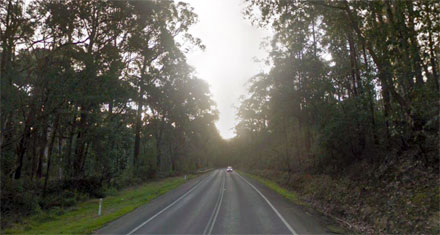
A radical overhaul of regulations and conservation management is needed if Victoria’s Regional Forest Agreements are to actually meet their worthy principles and achieve biodiversity aims, according to a regional forest group. Source: Philip Hopkins for Timberbiz
The South East Timber Association (SETA) has called for a radical reform of the current ‘lockup and leave’ conservation model. Instead, there should be an active and adaptive management of native species in both intact ecosystems and fragmented landscapes.
SETA, based in south-east NSW, has members with experience in forest ecology and fire science, and advocates on behalf of local forest communities. Its recommendations were set out in its submission on the renewal of Victoria’s RFAs.
The recommendations included:
- A balanced focus on the socio-economic aspects of the RFAs, with social and economic impact assessments before any changes are made to the State Forest land base or log supply levels.
- Support for a five-year rolling renewal program for the RFAs
- Performance monitoring of the CAR reserve system in the RFA five-yearly reports.
- The remaining Victorian threatened species action plans (now 80% completed) should be completed.
- A new monitoring and audit framework for both State Forest and National Parks, with a focus on key threatened species.
- The number of available forest industry firefighting machines and experienced operators should be recorded each five years to gauge firefighting capacity.
- Develop plans to transition current fuel reduction burning to traditional Aboriginal burning practices to the maximum extent possible.
SETA said the RFAs’ fine principle, to provide a CAR (Comprehensive, Adequate and Representative) reserve system, had been oversubscribed, with about 50% of public forests in Victoria now unavailable for timber supply.
“The RFAs have failed to provide long-term stability for rural communities dependent on the forests and the associated processing industries,” the submission said. “The lack of active and adaptive management is also inhibiting ecologically sustainable forest management.”
SETA said there had been improvements in forest management over the past two decades. Predator control, mainly of foxed and wild dogs, had led to a remarkable revival of mammals such as potoroos and bandicoots.
This made a mockery of activist claims that “harvesting is THE threat to these species”.
“Feral cats are a growing concern and their predation offsets some of the gains made in controlling foxes,” the submission said.
Protection and monitoring of protected species in parks and reserves did not appear to meet the standards applying to State Forests.
“Unfortunately, there is no specific targeting of feral cats across the broad landscape. Consequently, species at the bottom of the CWR (critical weight range) continue to decline, despite the large increase in the area of ‘protected’ parks and reserves,” the submission said. Thus five-yearly reviews of the CARR system must include biodiversity protection.
SETA said wildfires and megafires had increased in the past 16 years. The CSIRO estimated that the 2.4 million ha burnt in NSW and Victoria in 2002-03 killed 370 million birds. In the past 20 years, forest fuel loads had built up massively as fuel reduction burns dwindled.
“It is only a matter of time before devastating fires will impact much of the remaining unburnt Victorian forests, unless there are significant reductions in forest fuel loads,” the submission said.
There had been a loss of firefighting capacity as the timber industry had wound down over the same period.
“More and more water bombers might make a great media announcement, but do not replace lost on ground machines and experienced operator firefighting capacity,” the submission said.
The elimination of frequent low frequency burns also changed soil chemistry, with impacts on general tree and forest health.
SETA said the loss of Aboriginal burning practises had led to a ‘terra nullius’ approach, including ‘wilderness’, a precautionary approach and passive management.
“The precautionary approach is too often used as an excuse to do nothing,” the submission said.
Wildfires could also have a big impact on catchment water quality, and regrowth after fires had an impact on water catchment yield. “After the 2003 fires, the CSIRO advised that regrowth from the fires was expected to use all the water to be saved over the following 20 years through the Victorian government water saving initiatives,” the submission said.
“Thinning of regrowth will increase catchment water yield. With lower catchment yields due to less rainfall, thinning of regrowth has been shown by Western Australian research to be a much cheaper option than getting the same yield from a desalination plant.”
SETA said the existing regulatory frameworks had to be amended to codify active and adaptive management as a blueprint for future ecologically sustainable forest management across all land tenures.
“The loss of Aboriginal management of the land has created a major ecological disturbance that many ecologists fail to recognise when interpreting research results,” the submission said. “The problem is further exacerbated when scientists report research outcomes with an eco-political agenda, rather than a specific scientific objective.”
SETA said if the CARR system provided the environmental services that should be produced, the pressure to transfer more land from production forests to the reserve system would be greatly reduced.
“Less than adequate monitoring to date, shows that simply changing land tenure and applying passive management principles is not reversing the decline of many threatened flora and fauna species,” SETA said.
“Some level of active management is needed across all of Victoria if the growing list of threatened species is to be reversed.”







